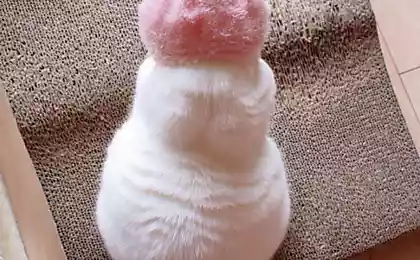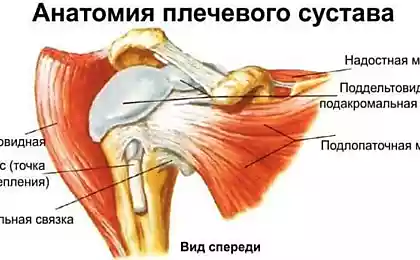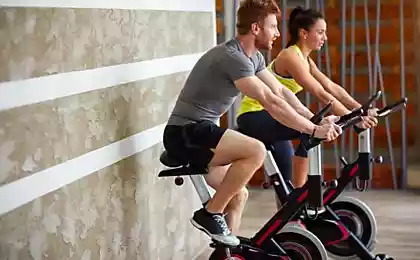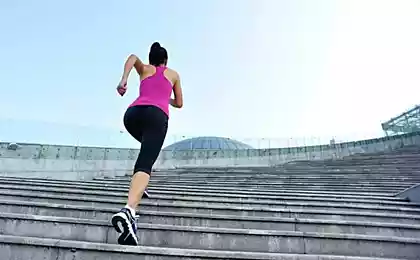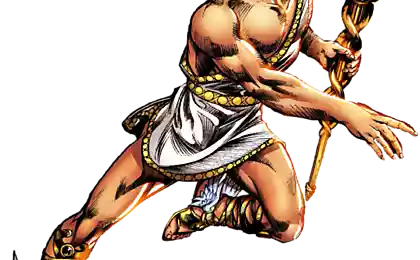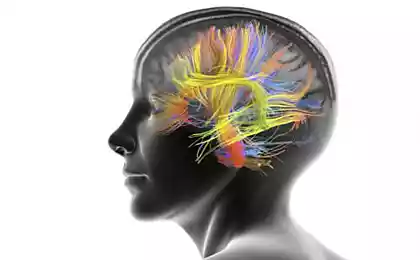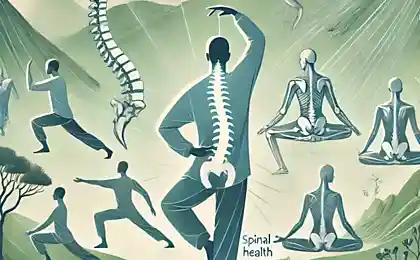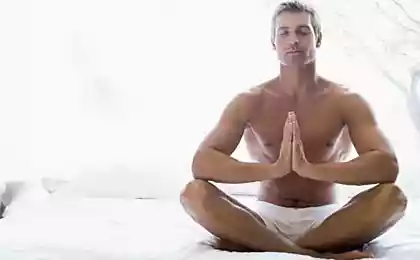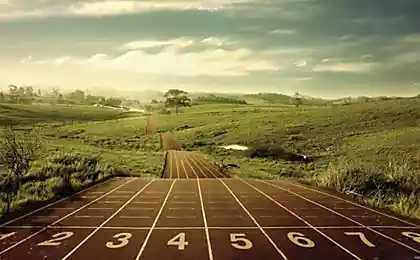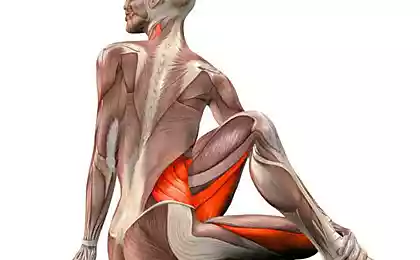723
Complex special exercises that unite the body and mind
Neurogenetics — gymnastics for the brain generic for children and adults, as well as its theoretical substantiation of educational kinesiology.
Educational Kinesiology is the study of human development through a natural, normal for a physical movement. She offers us a certain way an organized movement aimed at optimization of the activities of the brain and body.
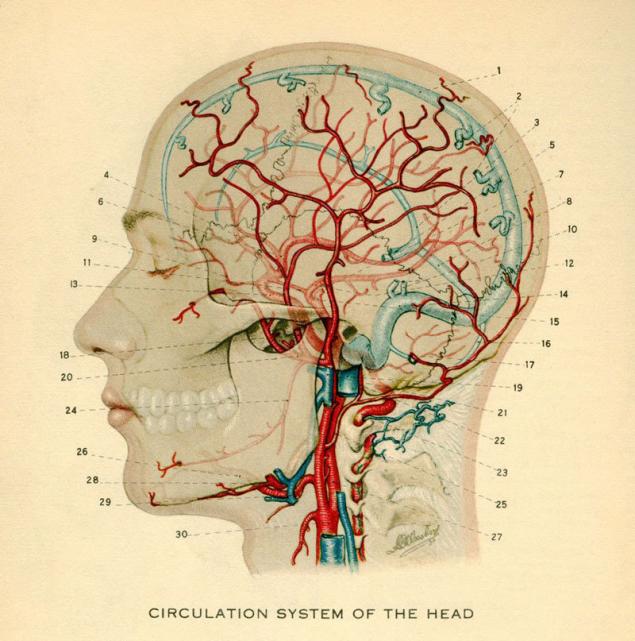
All our life passes in movement, and during this movement throughout his life a person experiences many different problems. Psychologists have long tried to find a way to help people, often facing different extreme situations and experiencing neuromuscular overload. And the solution was found after the development of educational kinesiology, which was aimed at studying the interactions of the body / mind.
Educational it was called because during the lessons we learn themselves, gain knowledge about their own problems and about what we should do next in order to compensate for previously transferred stress. Using specially selected exercises, our body balances the processes occurring in it, coordinates the work of the right and left hemispheres, promotes the interaction of body and intellect.
Developed neurogenetic was more than forty years ago, the American psychologist Paul Dennison. But in the early 90-ies of the last century in collaboration with Dr. Gail Dennison created the program "Gymnastics of the Brain", dedicated to the natural development of the person and the method of activation created by the nature of the mechanisms of brain function through physical body movements.
Paul and Gail Dennisons saw a huge potential in physical movement and which can be used for human development. They identified two types of movements:
The first type is a movement that crosses the midline of the body. These movements are most fully unite thought and movement, stimulate the natural mechanisms of our body and ten times faster transfer of information, helping to optimize the functioning of the nervous system, opening the possibility of neproizvol the immediacy of psychophysical functions and providing ease of learning.
The second type is a one – way movement of the body. These movements on the contrary contribute to the separation of thought and movement. They require hard work mind, the application of considerable effort and energy expenditure of the body and brain. This type of movement leads to a static behavior that requires concentration and concentration of consciousness, and stress.
We need both kinds of movement, since they provide mechanisms that stand at the basis of the cognitive activity of the brain. The mechanism is directed to the separation of thought and movement, is used at the initial stage of creation of any skill. Then, when the stage of automation, it gives way to the mechanism of Association of ideas and movements. Unfortunately, most commonly used learning-oriented immobility abstract and linear logic. We forget about natural methods of skill formation and often use the mechanism of separation of movement and thought.
Research conducted by the authors allowed them to create the program "Gymnastics of the Brain" in which they presented a series of exercises aimed at activation of the mechanism of unification of movement and thought.
Each of the exercises for the brain, contributes to the excitation of a certain area and the mechanism of Association of ideas and movements. As a result, the new learning becomes more natural and better to remember. In addition, exercises for the brain contribute to the development of coordination of movements and psychophysical functions.
The brain exercises are put together in groups.The first group includes all movements that cross the midline of the body. They have a stimulating effect on large and small motor skills. A mechanism that combines the movement and the idea underlying these movements, contributes to improved communication between the right and left hemispheres of the brain, perceptual quality of the material.
The second group of motion – these exercises are aimed at stretching the muscles of the body. These exercises help to release tension in muscles and tendons. As a result of applying these exercises the muscles are taking a normal condition and send the brain a signal that they are in a calm relaxed state and the person is ready to cognitive work. If we consider it from the point of view of the brain, this means the possibility of free transfer of information from the posterior of the brain (areas of survival) in the front (cause-determining) through the limbic system, which transmits knowledge in the higher departments of a brain.
The third group is a group of exercises aimed at energeticaly body, that is providing the desired intensity and speed of the processes between the nerve cells of the brain.
The fourth group is posobie exercises that have an impact on the limbic and emotional systems of the brain. They have a rhythmic and stabilizing effect on the nervous processes, contributing to effective learning.
Each exercise is performed not more than 2 minutes. They can be done in various combinations.
The brain exercises are universal for children and adults. They are simple and does not require any special physical training. When regularly performed they relieve fatigue, increase concentration, mental and physical activity.
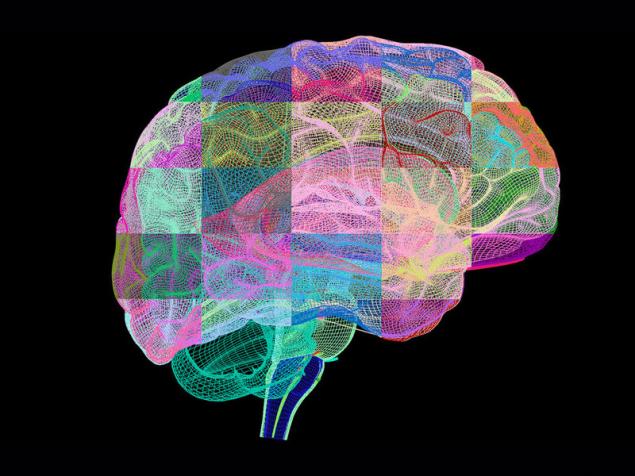
The first group of exercises for the brain – movement crossing the middle line of the body1. Cross steps
Step on the spot turning right forearm left thigh and Vice versa. At the same time trying to carry the shoulder to the hip, not the elbow to the knee, and the head is slightly rotated in the direction of motion. When you perform exercises do not hold the mouth, the lips must be loose and relaxed.
For children the rate of exercise is not important. Adults at first, it is necessary to do the exercise slowly to feel and hear your body.
2. Lazy eights
Stand straight with feet shoulder width apart, feet parallel. Pull the front right hand clenched into a fist with straight thumb. The gaze is directed to the tip of your finger. Starting movement to the right-draw up in front of him in the air lazy (horizontal) eight. The middle eight should be on the same level with the median line of your body. Try to draw the maximum round eight. No matter whether you have it big or small, the main thing that it was round. Look all the time is aimed at the tip of the thumb. Perform the exercise several times changing hands. The left hand starts moving left and upwards. Also do a few times. After this, interlock the two hands together to the castle, thumbs crossed and do a lazy eight with both hands. The gaze is not detached from the crosshairs of the thumb. Head turning, watching only the eyes.
Children can also exercise drawing with a pencil on paper or Board.
3. Elephant
Stand straight, slightly bend your knees, press your right ear to your right shoulder and pull your right hand forward. Outstretched hand in the air draw a horizontal figure eight starting from the center and right-up. Eyes follow the fingertips. Moving only your upper body. Perform the exercise several times changing hands.
4. Cap for thinking
Take yourself by the ears. Thumb back, pointing ahead. Massage yourself gently stretching my ears and twisting them back, every point on the edge of the ear. Then turn head as far right as possible, again take yourself by the ears and continue to massage allowing your head to turn farther and farther to the right. As soon as the head to stop, turn it to the left and again massaging the ears allowing the head to turn, but this time to the left.
5. Rocker
This exercise neurogenetic is a variant of lazy eights, but performed on the floor and legs. To perform the exercise you must sit on the floor or on a Mat. Sit back and lean on his hands. Bend legs at the knees. Knees follow the movement of the eight, drawing it in a horizontal plane.
6.EnergyStar
Last in this group exercise for the brain to perform well at the end of the day to relax. Sit down and put your hands on the table palms down. Put your head between your hands, tapping the table with his forehead. Exhale, then deep breath, filling the air the whole chest. Then, easily, without straining, raise your head, from the forehead, neck and upper torso. Shoulders and lower torso keep relaxed. Exhale and drop chin to chest, trying to relax, and how to lengthen the back muscles of the neck and back. Stay relaxed and breathe evenly and calmly.
The time required for each exercise less than a minute.
The second group of exercises for the brain – movements aimed at stretching the muscles of the body1. Owl
This is a good exercise relaxes the muscles of the shoulders, which occurs when prolonged sitting. The left hand squeeze the muscles of the right shoulder. Turn your head to the right, wide open (waterside) eyes and look directly. Then, inhale begin to rotate the head to the left and simultaneously pull the neck forward, hooting like an owl. During the turn take a few of such movements. Then turn also back. The fingers of the left hand squeeze at this time in the shoulder. Squeeze on the exhale, release on inhale.
Repeat the exercise, clenching his right hand the left shoulder.
2. Activation of hands
To perform well before you have to write a lot. Lift up her outstretched right hand, pressing it to his ear. Inhale through pursed lips and grab the right hand behind the head bent left. Move the right hand left to itself, from itself, and back and forth.
3.Flexion of the foot
Contributes to the rapid inclusion of linguistic functions of the brain. The exercise is performed sitting on a chair. Put right foot on left knee. Massage places stress of the muscles in the ankle, calf, under the knee and pulling them simultaneously bend a foot massage to yourself and from yourself. Repeat with the other leg.
4.Pump
Stand up straight holding onto the back of a chair. Left leg put forward, and the right move back. You should get a lunge on the left leg. The body does not tilt. The heel of the right foot firmly pressed to the floor. Take a deep breath and raise your heel as you exhale, once again push her to the floor. Repeat several times for each leg.
5.Gravitational slide
Especially effective is exercise after prolonged sitting at a Desk or a long drive in the car. Sit down, crossing her outstretched legs at the ankles. Exhaling, bend forward, placing outstretched arms smoothly down. On the inhale straighten up, raising his hands up. Repeat several times, making bending forward, right and left. Switch ankles and repeat the exercise.
6.Earthing
This exercise neurogenetic helps to focus on the job. Place your feet much wider than shoulder width, so that the left foot looking forward and the right was turned to the right. Hands on his belt. On the exhale, bend your right knee, inhale straighten. Repeat three times. Then turn the right foot forward, left is left and repeat the exercise for the left foot.
The third group of exercises for the brain – movement, to increase body energy1. Button brain
The fingers of his right hand – the thumb and index finger, put it under the clavicle, where dimples. Left hand palm on the navel. A circular motion massage the point under the collarbone. Then switch hands and massage the subclavian region has the fingers of his left hand.
2. Buttons Land
Before exercise, touch the two fingers of the right hand to points beneath the lower lip. And the left hand should touch the upper edge of the frontal bone. Take those breaths, and try to feel how energy flows into the center of your body. Breathe evenly and deeply, continuing to hold hands on the points.
3.Button Balance
The left hand put in the navel area. Your right thumb push down on the recess behind the right ear at the base of the skull. Take a slow deep breath, feeling filled with energy. Then push down on the recess behind the left ear and make a slow exhale.
4. Button space
Finger of the right hand tap the dots above the upper lip. The palm of the left hand put on the sacrum behind. Take deep breaths visualize how the energy rises through the spine, relaxing each vertebrae.
Do 5-6 cycles of inhale-exhale. Then switch hands and repeat the whole cycle.
5. Energy yawn
Take a comfortable position for you, put her hands on her cheeks. Open and close the mouth, simulating a yawn. Look under the hands of the point connecting the upper and lower jaw. Place your fingers on these points. Now again open your mouth and imitate a yawn when the mouth is maximally opened massage fingers found point. Try at the same time with these proiznesti long sound "Ah-Ah-Ah-Ah-ooh". Repeat the exercise 4-6 times.
The fourth group of exercises – exercises that enhance the moodHooks Dennison
Stand up straight, legs crossed. Extend hands in front of him, crossed and palms together in the castle. Bend your elbows, turning the brush inside and pinning them to your chest so that your elbows downward. Press language to the sky behind the upper teeth. The gaze is directed upwards. Breathe evenly, calmly. The body is relaxed. Wait so as long as deemed necessary.
Then, spread your legs shoulder width apart. His head slightly bowed forward, eyes lowered, the language of the same for upper teeth. Hands cupped at the bottom. The fingers touch each other. Patajali was so little fully releasing the tension.
The execution time of each exercise, no more than 1 minute. Published
P. S. And remember, only by changing their consumption — together we change the world! ©
Source: fitnessbrain.ru/razvitie-mozga/uprazhneniya-razvitie-mozga/neyrogimnastika-uprazhneniya-dlya-mozga
Educational Kinesiology is the study of human development through a natural, normal for a physical movement. She offers us a certain way an organized movement aimed at optimization of the activities of the brain and body.

All our life passes in movement, and during this movement throughout his life a person experiences many different problems. Psychologists have long tried to find a way to help people, often facing different extreme situations and experiencing neuromuscular overload. And the solution was found after the development of educational kinesiology, which was aimed at studying the interactions of the body / mind.
Educational it was called because during the lessons we learn themselves, gain knowledge about their own problems and about what we should do next in order to compensate for previously transferred stress. Using specially selected exercises, our body balances the processes occurring in it, coordinates the work of the right and left hemispheres, promotes the interaction of body and intellect.
Developed neurogenetic was more than forty years ago, the American psychologist Paul Dennison. But in the early 90-ies of the last century in collaboration with Dr. Gail Dennison created the program "Gymnastics of the Brain", dedicated to the natural development of the person and the method of activation created by the nature of the mechanisms of brain function through physical body movements.
Paul and Gail Dennisons saw a huge potential in physical movement and which can be used for human development. They identified two types of movements:
The first type is a movement that crosses the midline of the body. These movements are most fully unite thought and movement, stimulate the natural mechanisms of our body and ten times faster transfer of information, helping to optimize the functioning of the nervous system, opening the possibility of neproizvol the immediacy of psychophysical functions and providing ease of learning.
The second type is a one – way movement of the body. These movements on the contrary contribute to the separation of thought and movement. They require hard work mind, the application of considerable effort and energy expenditure of the body and brain. This type of movement leads to a static behavior that requires concentration and concentration of consciousness, and stress.
We need both kinds of movement, since they provide mechanisms that stand at the basis of the cognitive activity of the brain. The mechanism is directed to the separation of thought and movement, is used at the initial stage of creation of any skill. Then, when the stage of automation, it gives way to the mechanism of Association of ideas and movements. Unfortunately, most commonly used learning-oriented immobility abstract and linear logic. We forget about natural methods of skill formation and often use the mechanism of separation of movement and thought.
Research conducted by the authors allowed them to create the program "Gymnastics of the Brain" in which they presented a series of exercises aimed at activation of the mechanism of unification of movement and thought.
Each of the exercises for the brain, contributes to the excitation of a certain area and the mechanism of Association of ideas and movements. As a result, the new learning becomes more natural and better to remember. In addition, exercises for the brain contribute to the development of coordination of movements and psychophysical functions.
The brain exercises are put together in groups.The first group includes all movements that cross the midline of the body. They have a stimulating effect on large and small motor skills. A mechanism that combines the movement and the idea underlying these movements, contributes to improved communication between the right and left hemispheres of the brain, perceptual quality of the material.
The second group of motion – these exercises are aimed at stretching the muscles of the body. These exercises help to release tension in muscles and tendons. As a result of applying these exercises the muscles are taking a normal condition and send the brain a signal that they are in a calm relaxed state and the person is ready to cognitive work. If we consider it from the point of view of the brain, this means the possibility of free transfer of information from the posterior of the brain (areas of survival) in the front (cause-determining) through the limbic system, which transmits knowledge in the higher departments of a brain.
The third group is a group of exercises aimed at energeticaly body, that is providing the desired intensity and speed of the processes between the nerve cells of the brain.
The fourth group is posobie exercises that have an impact on the limbic and emotional systems of the brain. They have a rhythmic and stabilizing effect on the nervous processes, contributing to effective learning.
Each exercise is performed not more than 2 minutes. They can be done in various combinations.
The brain exercises are universal for children and adults. They are simple and does not require any special physical training. When regularly performed they relieve fatigue, increase concentration, mental and physical activity.

The first group of exercises for the brain – movement crossing the middle line of the body1. Cross steps
Step on the spot turning right forearm left thigh and Vice versa. At the same time trying to carry the shoulder to the hip, not the elbow to the knee, and the head is slightly rotated in the direction of motion. When you perform exercises do not hold the mouth, the lips must be loose and relaxed.
For children the rate of exercise is not important. Adults at first, it is necessary to do the exercise slowly to feel and hear your body.
2. Lazy eights
Stand straight with feet shoulder width apart, feet parallel. Pull the front right hand clenched into a fist with straight thumb. The gaze is directed to the tip of your finger. Starting movement to the right-draw up in front of him in the air lazy (horizontal) eight. The middle eight should be on the same level with the median line of your body. Try to draw the maximum round eight. No matter whether you have it big or small, the main thing that it was round. Look all the time is aimed at the tip of the thumb. Perform the exercise several times changing hands. The left hand starts moving left and upwards. Also do a few times. After this, interlock the two hands together to the castle, thumbs crossed and do a lazy eight with both hands. The gaze is not detached from the crosshairs of the thumb. Head turning, watching only the eyes.
Children can also exercise drawing with a pencil on paper or Board.
3. Elephant
Stand straight, slightly bend your knees, press your right ear to your right shoulder and pull your right hand forward. Outstretched hand in the air draw a horizontal figure eight starting from the center and right-up. Eyes follow the fingertips. Moving only your upper body. Perform the exercise several times changing hands.
4. Cap for thinking
Take yourself by the ears. Thumb back, pointing ahead. Massage yourself gently stretching my ears and twisting them back, every point on the edge of the ear. Then turn head as far right as possible, again take yourself by the ears and continue to massage allowing your head to turn farther and farther to the right. As soon as the head to stop, turn it to the left and again massaging the ears allowing the head to turn, but this time to the left.
5. Rocker
This exercise neurogenetic is a variant of lazy eights, but performed on the floor and legs. To perform the exercise you must sit on the floor or on a Mat. Sit back and lean on his hands. Bend legs at the knees. Knees follow the movement of the eight, drawing it in a horizontal plane.
6.EnergyStar
Last in this group exercise for the brain to perform well at the end of the day to relax. Sit down and put your hands on the table palms down. Put your head between your hands, tapping the table with his forehead. Exhale, then deep breath, filling the air the whole chest. Then, easily, without straining, raise your head, from the forehead, neck and upper torso. Shoulders and lower torso keep relaxed. Exhale and drop chin to chest, trying to relax, and how to lengthen the back muscles of the neck and back. Stay relaxed and breathe evenly and calmly.
The time required for each exercise less than a minute.
The second group of exercises for the brain – movements aimed at stretching the muscles of the body1. Owl
This is a good exercise relaxes the muscles of the shoulders, which occurs when prolonged sitting. The left hand squeeze the muscles of the right shoulder. Turn your head to the right, wide open (waterside) eyes and look directly. Then, inhale begin to rotate the head to the left and simultaneously pull the neck forward, hooting like an owl. During the turn take a few of such movements. Then turn also back. The fingers of the left hand squeeze at this time in the shoulder. Squeeze on the exhale, release on inhale.
Repeat the exercise, clenching his right hand the left shoulder.
2. Activation of hands
To perform well before you have to write a lot. Lift up her outstretched right hand, pressing it to his ear. Inhale through pursed lips and grab the right hand behind the head bent left. Move the right hand left to itself, from itself, and back and forth.
3.Flexion of the foot
Contributes to the rapid inclusion of linguistic functions of the brain. The exercise is performed sitting on a chair. Put right foot on left knee. Massage places stress of the muscles in the ankle, calf, under the knee and pulling them simultaneously bend a foot massage to yourself and from yourself. Repeat with the other leg.
4.Pump
Stand up straight holding onto the back of a chair. Left leg put forward, and the right move back. You should get a lunge on the left leg. The body does not tilt. The heel of the right foot firmly pressed to the floor. Take a deep breath and raise your heel as you exhale, once again push her to the floor. Repeat several times for each leg.
5.Gravitational slide
Especially effective is exercise after prolonged sitting at a Desk or a long drive in the car. Sit down, crossing her outstretched legs at the ankles. Exhaling, bend forward, placing outstretched arms smoothly down. On the inhale straighten up, raising his hands up. Repeat several times, making bending forward, right and left. Switch ankles and repeat the exercise.
6.Earthing
This exercise neurogenetic helps to focus on the job. Place your feet much wider than shoulder width, so that the left foot looking forward and the right was turned to the right. Hands on his belt. On the exhale, bend your right knee, inhale straighten. Repeat three times. Then turn the right foot forward, left is left and repeat the exercise for the left foot.
The third group of exercises for the brain – movement, to increase body energy1. Button brain
The fingers of his right hand – the thumb and index finger, put it under the clavicle, where dimples. Left hand palm on the navel. A circular motion massage the point under the collarbone. Then switch hands and massage the subclavian region has the fingers of his left hand.
2. Buttons Land
Before exercise, touch the two fingers of the right hand to points beneath the lower lip. And the left hand should touch the upper edge of the frontal bone. Take those breaths, and try to feel how energy flows into the center of your body. Breathe evenly and deeply, continuing to hold hands on the points.
3.Button Balance
The left hand put in the navel area. Your right thumb push down on the recess behind the right ear at the base of the skull. Take a slow deep breath, feeling filled with energy. Then push down on the recess behind the left ear and make a slow exhale.
4. Button space
Finger of the right hand tap the dots above the upper lip. The palm of the left hand put on the sacrum behind. Take deep breaths visualize how the energy rises through the spine, relaxing each vertebrae.
Do 5-6 cycles of inhale-exhale. Then switch hands and repeat the whole cycle.
5. Energy yawn
Take a comfortable position for you, put her hands on her cheeks. Open and close the mouth, simulating a yawn. Look under the hands of the point connecting the upper and lower jaw. Place your fingers on these points. Now again open your mouth and imitate a yawn when the mouth is maximally opened massage fingers found point. Try at the same time with these proiznesti long sound "Ah-Ah-Ah-Ah-ooh". Repeat the exercise 4-6 times.
The fourth group of exercises – exercises that enhance the moodHooks Dennison
Stand up straight, legs crossed. Extend hands in front of him, crossed and palms together in the castle. Bend your elbows, turning the brush inside and pinning them to your chest so that your elbows downward. Press language to the sky behind the upper teeth. The gaze is directed upwards. Breathe evenly, calmly. The body is relaxed. Wait so as long as deemed necessary.
Then, spread your legs shoulder width apart. His head slightly bowed forward, eyes lowered, the language of the same for upper teeth. Hands cupped at the bottom. The fingers touch each other. Patajali was so little fully releasing the tension.
The execution time of each exercise, no more than 1 minute. Published
P. S. And remember, only by changing their consumption — together we change the world! ©
Source: fitnessbrain.ru/razvitie-mozga/uprazhneniya-razvitie-mozga/neyrogimnastika-uprazhneniya-dlya-mozga
Opened new optoelectronic properties of perovskites
The importance of rules and boundaries for children


